Enhancing fire safety and burns prevention in young children
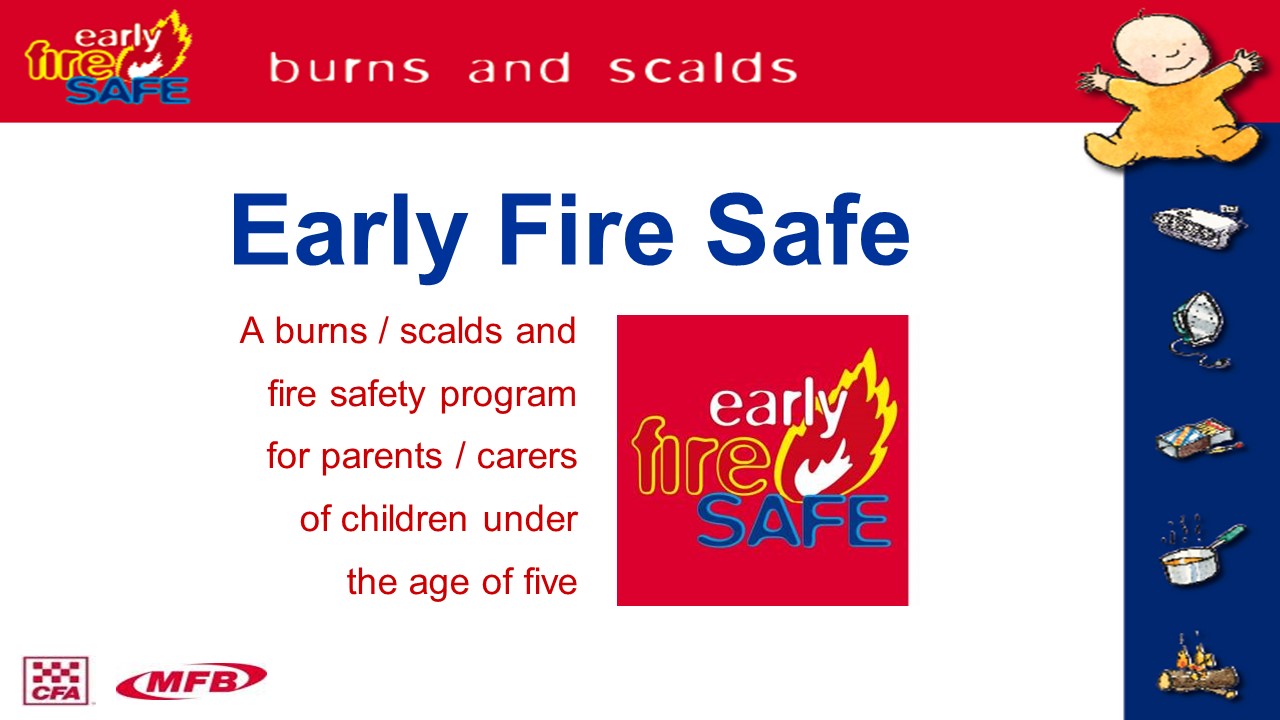 Original Early Fire Safe Program
Original Early Fire Safe Program
Young children aged 0 to 4 years old are still overrepresented in home fire fatalities and burn injuries across Australia.
This group is one of the most vulnerable and dependent in our community, relying on the adults who care for them to make their environment safe, remove hazards and make good decisions.
To reach parents, CFA and Fire Rescue Victoria in partnership with the Alfred and Children’s Hospital started a program called Early Fire Safe in 2008. It aims to teach new parents how to prevent fires, burns and scalds and keep young children safe. As a result, it is usually delivered in partnership with Maternal and Child Health new parent group programs. It involves a one-hour in-person presented education session.
There have been several recent triggers for the review of Early Fire Safe.
The Preventable Residential Fire Fatalities in Australia (from July 2003 to June 2017) found there were 70 preventable fire deaths of children, aged 0 to 4. The cause of fire was more often lighters or matches (31 of the cases), which may indicate fire play.
The link to social and financial disadvantage was particularly significant, with almost half of deaths occurring in locations in the top 10 per cent of greatest socioeconomic disadvantage. These findings are consistent with the international fire safety literature.
Another trigger is a shift in burns and fire injury data for this age group. Over the last five years there have been more hospital admissions from outdoor campfires and fire pits, and less from more traditional causes such as indoor heaters and flammable nightwear.
The importance of addressing fire play in the later stages of this age group has been triggered by several recent tragedies in Victoria. These deaths make it very hard to ignore the need for an updated program and approach.
Victorian fire services are updating Early Fire Safe over the next few years alongside Victoria’s Department of Health, Maternal and Child Health branch.
Between March and May this year, 250 maternal and child health nurses (MCHNs) completed a survey to help us understand how to improve Early Fire Safe. Targeted online interviews were also conducted to investigate reaching parents experiencing socioeconomic disadvantage.
The survey showed that 88 per cent of the MCHNs had never been involved with delivering Early Fire Safe. This gave us a good sense of the number of parents who do not have access to this program. It provides evidence for a multi-modal approach to this program, beyond the current in-person delivery.
Asked about the most effective ways to engage parents about burns prevention and home fire safety we were told:
• 70 per cent preferred in-person delivery through CFA and FRV.
• 59 per cent suggested social media,
• 58 per cent stated that MCHNs are ideal for this type of safety advice.
• 44 per cent chose the baby bundle initiative.
• 39 per cent said the Kidsafe website
CFA and FRV would like to offer in-person delivery everywhere across the state. However, the reality is we will not have the resources, and this is another reason for partnering with Maternal and Child Health.
We will be able to do some targeted in-person sessions to new parents and families that are at higher risk, and we will continue delivery where relationships are established. But we will also need help to reach new parents with this critical safety advice. The responses to the survey told us MCHNs are willing to help; we just need to determine exactly how to do this.
The MCHN survey also highlighted the use of real-world examples and experiences as ways to enhance safety advice. Sharing real-life stories and personal anecdotes of near misses or actual incidents from other parents can make the safety advice more tangible. It helps to dispel the belief that it won’t happen to them and brings a sense of reality to the potential risks.
MCHN interviews highlighted the need to have accessible and plain English materials to cater for newly arrived community members and people with low English literacy. They also wanted resources to be culturally sensitive and targeted to parents without being overly alarming.
A parent survey of 120 parents was also used to gather feedback. Interestingly, parents and carers nominated MCHNs as the number one way they preferred to learn about fire safety and burns prevention. Second was informal conversations with family and friends, with social media coming third. This helps to validate the approach of partnering with MCHNs in our future Early Fire Safe delivery.
Overall, children aged 0 to 4 remain at higher risk of fire fatalities and burns and scald injuries, particularly in socioeconomically disadvantaged areas. By leveraging partnerships with Maternal and Child Health services and other partners the updated Early Fire Safe program will aim to reach a broader audience and support families at higher risk.
If you want to be part of the Early Fire Safe redevelopment or have some ideas or any questions please contact Angela Cook angela.cooka@cfa.vic.gov.au.
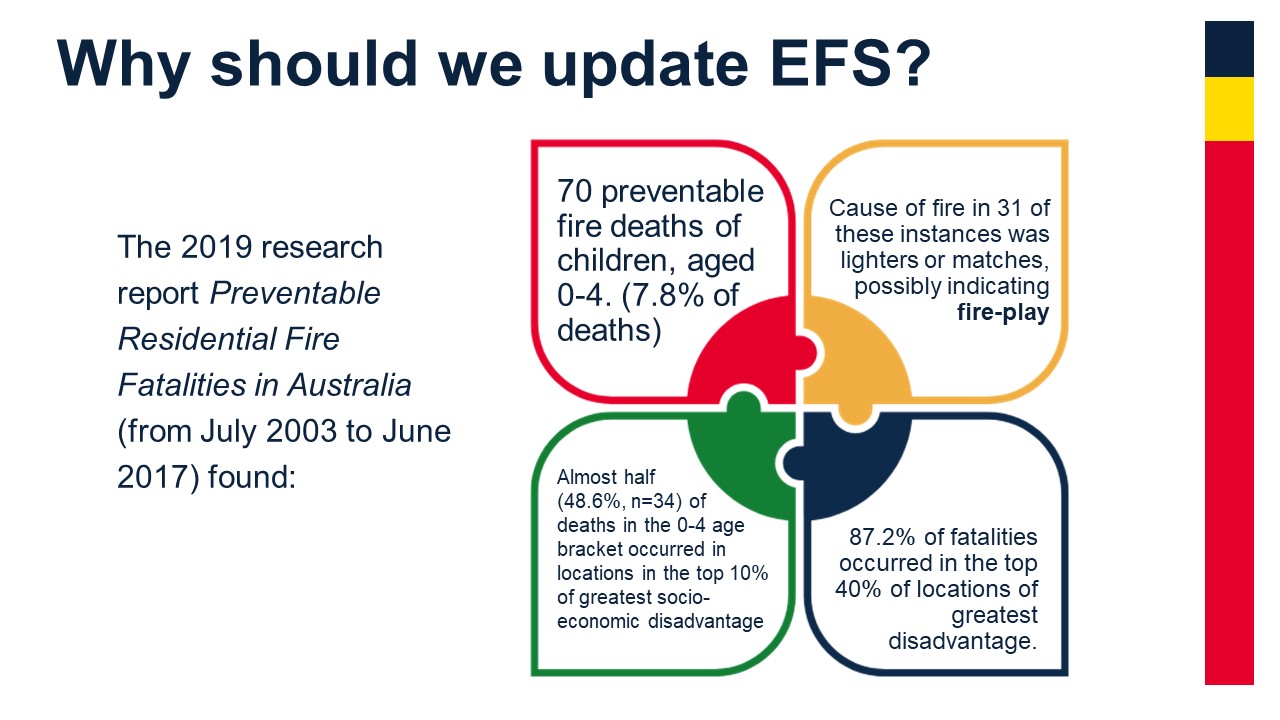 The original Early Fire Safe Program Slidedeck
The original Early Fire Safe Program Slidedeck-
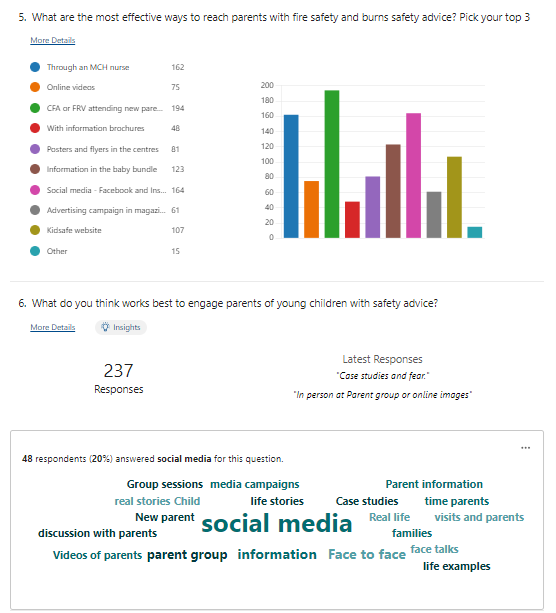 Survey response data from the MCHN survey
Survey response data from the MCHN survey
-
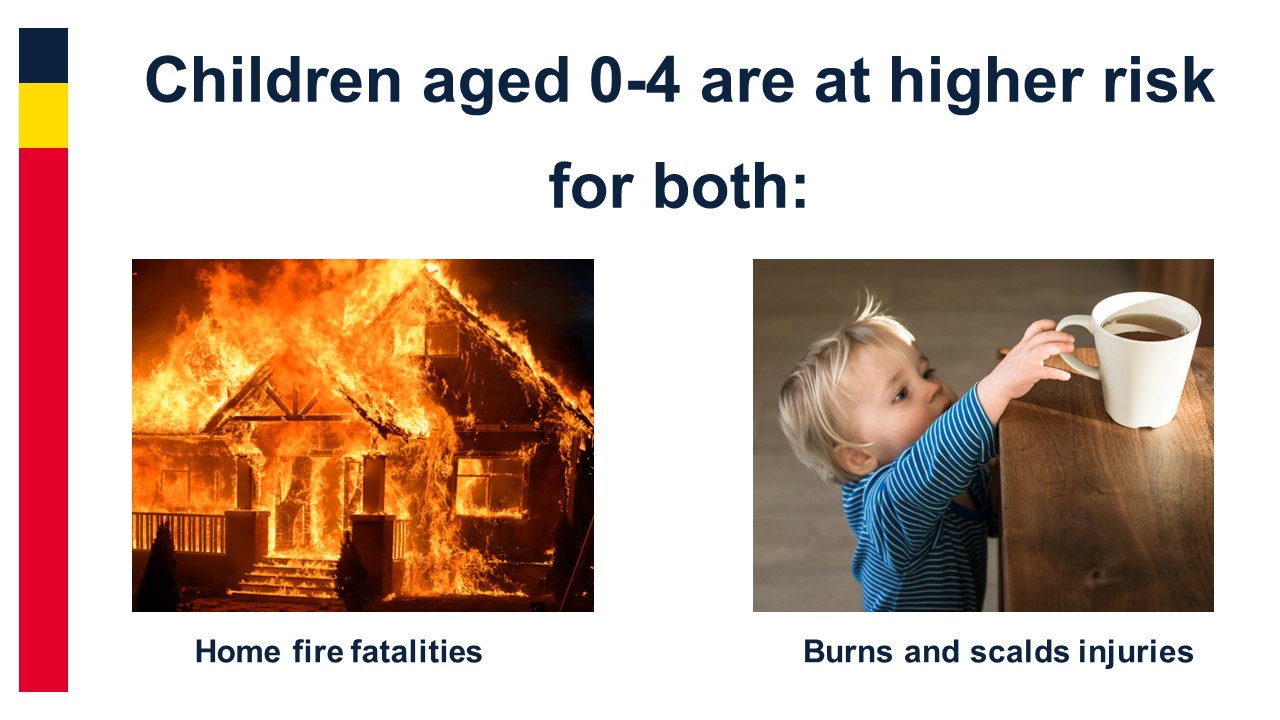 Children aged 0-4 are overrepresented in both home fire fatalities and burns and scalds injuries
Children aged 0-4 are overrepresented in both home fire fatalities and burns and scalds injuries
-
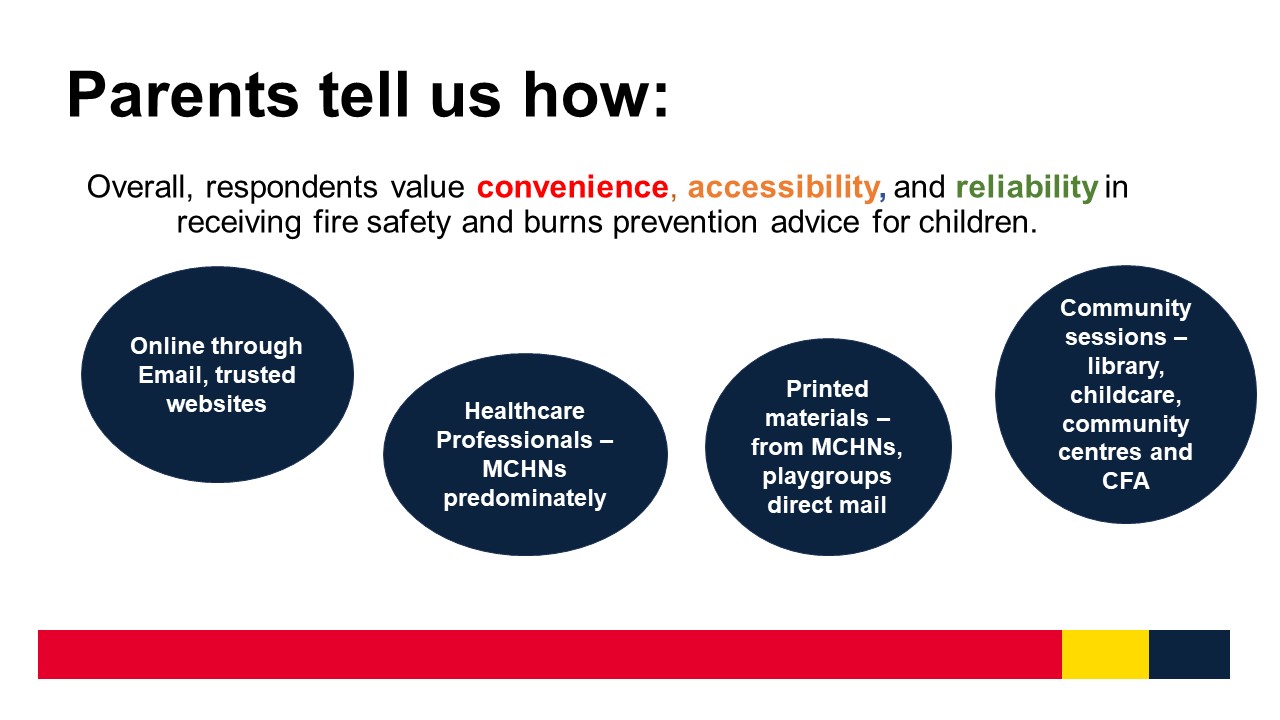 The key feedback from parents who completed the survey about how they want to access fire safety infromation.
The key feedback from parents who completed the survey about how they want to access fire safety infromation.
-